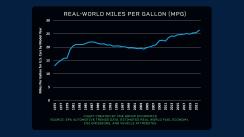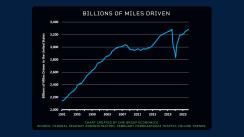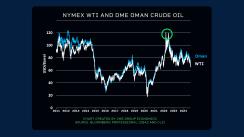Erik Norland, CME Group
At a Glance:
- With vehicle efficiency up and China's economy slowing, WTI crude oil prices experienced late summer lows, though they have since started to rebound.
- Driving would need to increase by nearly 2% each year to keep fuel demand stable.
Vehicle Efficiency
The average car in model year 2024 will likely be able to drive as much as 24% further on the same amount of fuel as a similar car from model year 2012. Since a car typically lasts about 12 years, this means that each year drivers around the world need to drive about 2% further than the year before just to keep demand stable.
In the U.S., drivers aren’t driving any further than they were back in 2019.

Demand From China
Last year, 35% of new cars sold in China were EVs, and this year that could grow to over 50%. China’s economy is also growing more slowly than in the past. Since 2005, oil prices have often peaked about one year after peaks in China’s pace of growth. China’s growth rate last crested in 2021, and oil prices peaked a year later in 2022.
Moreover, China’s economy decelerated sharply over the summer which might deprive oil of a critical source of demand growth going into late 2024 and into next year.
Finally, watch for OPEC+ decisions later this year, which could potentially boost output.






